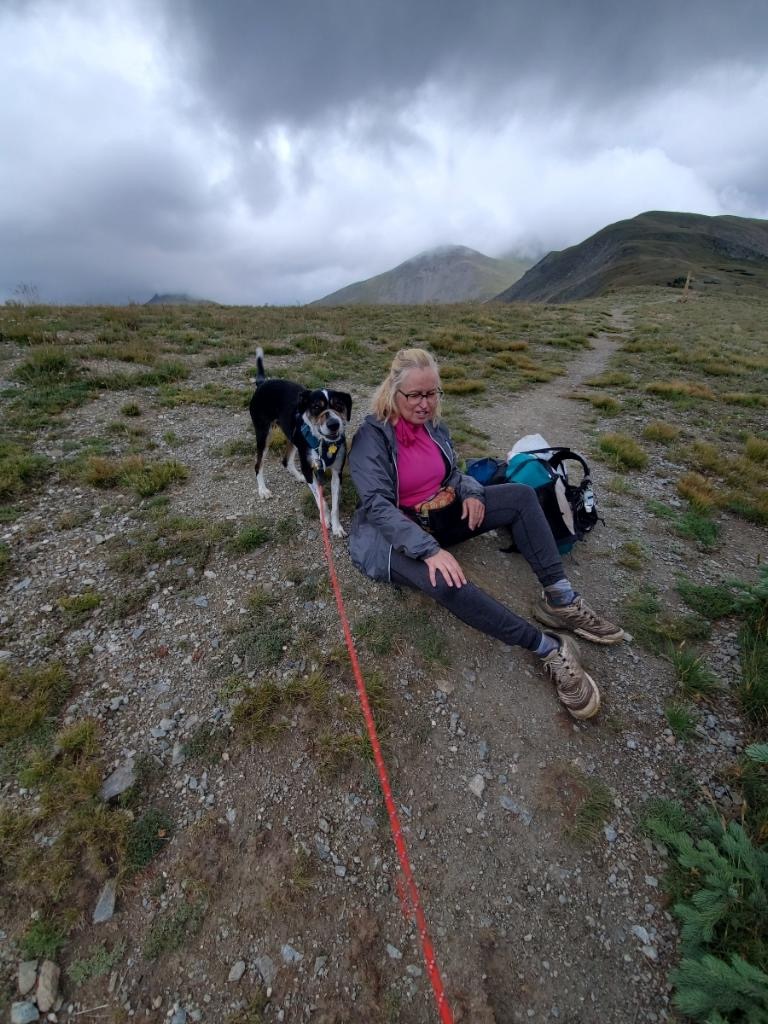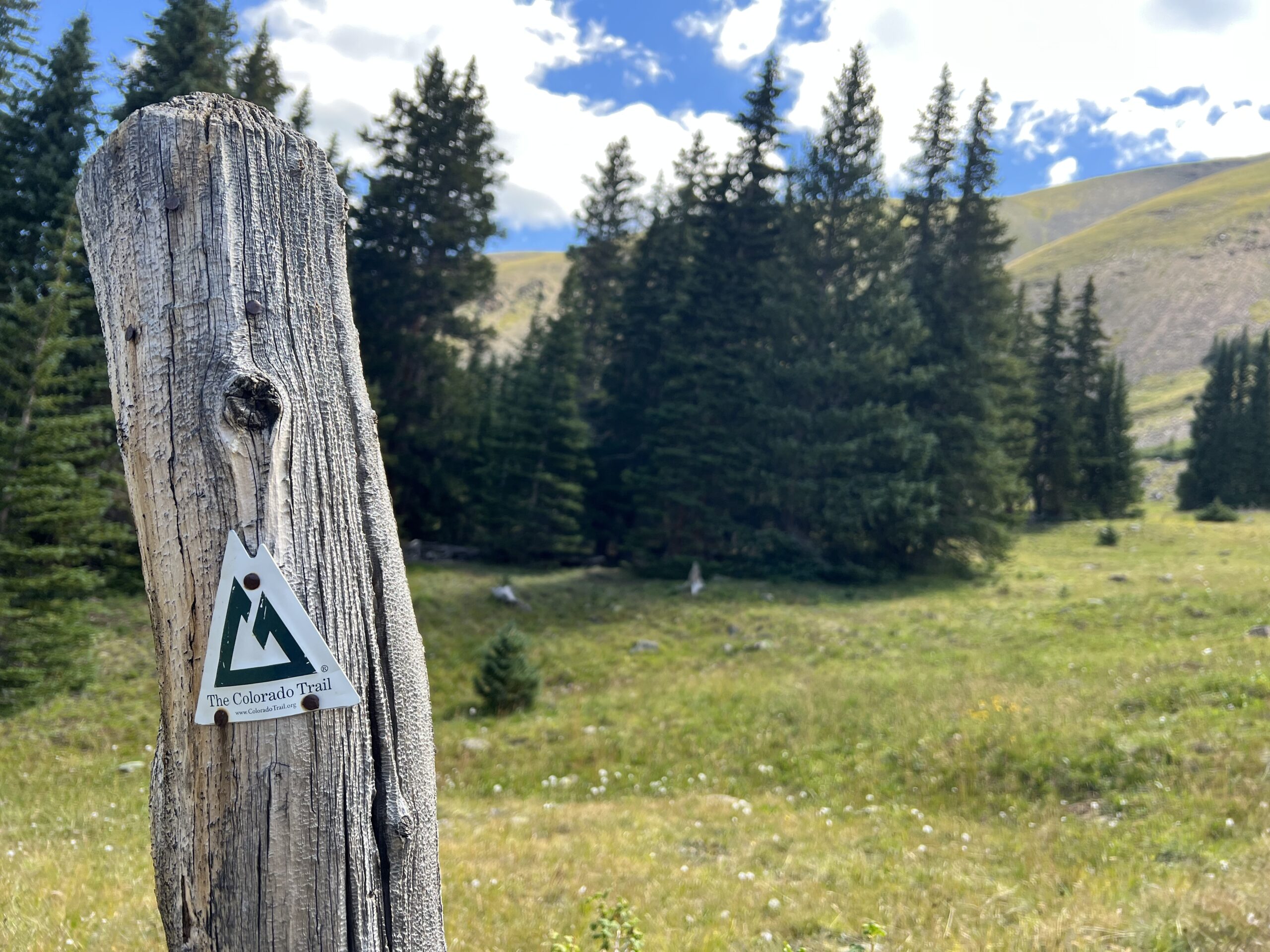Hey Mountains, I’m Coming for You! (Colorado Trail: Take 2)
It’s time to get back on the trail!
Last year was not my year for backpacking long trails. I started the PCT in March, only to bail after a week when an ominous echo in my head would not stop repeating, “You’re not supposed to be here right now.”
Life Is Full of Switchbacks
The day I got off the Pacific Crest Trail in Julian was a glorious spring day. I hiked three miles uphill taking loads of pictures and soaking up the beauty of the trail. I did my best to ignore the nagging feeling I’d been having all week, but the voice finally broke me.
“If you don’t get off the trail now, something bad is going to happen,” it whispered.
Unsettled, I stopped at the next opportunity and sat on a rock (after carefully checking for snakes, of course). Maybe I should listen to my intuition, I thought. It rarely spoke to me with such determination. Its persistence felt ominous.
Eventually, I turned around, back to the trailhead where I hitched a ride to town and checked into a motel. I needed time to think. Heading out to brood over a beer seemed like a good idea, but suddenly I couldn’t walk.
Excruciating pain in my right leg accompanied every step. My trekking poles served as crutches while I hobbled around town making arrangements to get back to Georgia, which took a few days.
When I finally limped home, I was diagnosed with a foot injury: posterior tibial tendonitis and a possible stress fracture. That was aggravating an old knee injury, magnifying the pain. My PCT hike was over for sure.
Time to Re-Route
Several weeks in a boot gave me plenty of time to dream about the trail I’d hike when I healed.
As April turned to May and May became June, the Colorado Trail rose to the top of my list. If the doctor gave the OK, I’d be on a plane to Denver to start hiking by the end of the month.
I was diligent in my exercises and trained as much as I could to stay fit. I reviewed my backpacking kit and made a few tweaks to my gear list. The green light came and off I went, ready to tackle mountains of new challenges.
Any new adventure comes bundled with its share of fears and apprehensions. Can I handle the altitude? Will my foot be OK? What if I step on a rattlesnake? The one I didn’t consider: what if I’m too sick to hike?
Why Am I So Winded?
COVID was waning but I still wore my mask while I traveled and even around town as I acclimated to higher elevation in Boulder. A few days later, I was at Waterton Canyon, starting the 485-mile hike, heading SOBO from Denver to Durango.
By the time I reached Bailey for an early resupply stop, I felt a cold coming on. My quick overnight morphed into a zero during which I loaded up on cold meds to stop my cough.
The quick intervention seemed to work and I hiked out the next day, assuming I’d be back to 100% in no time.
I wasn’t.
I struggled to breathe on every incline. A stop in Breckenridge turned into three nights of rest and hours on the O2 machine. Feeling a little stronger, I set out for Leadville, taking my time on every climb. As I reached 10,000’ I was wiped.
“Time to see a doctor,” I surrendered, wondering if the cold was gone and if high altitude was really the culprit.
It’s Not COVID
My trip to urgent care revealed that 1) I didn’t have COVID and 2) altitude was NOT my problem. The doc looked at my blood oxygen levels and said, “You’re doing pretty well for a flatlander,” when he learned I was from Georgia.
His vague diagnosis of a nameless “respiratory infection” didn’t give me much comfort but I followed his advice to rest for a few days and then hike on. I took three more zeroes at Above the Clouds hostel, optimistic that time would cure me.
Soon I was back on the trail, armed with an inhaler prescribed to help with my breathing. My next goal: Twin Lakes and the Collegiate West.
I didn’t make it.
After two nights on the trail, it was evident that the inhaler wasn’t doing a thing, and I needed more rest. I dragged myself up a mountain and found one bar of cell signal – just enough to call for a ride back to Leadville.
A week after my first medical visit, it was time to seek a second opinion.
Doctor Lisa was highly recommended for her standing in the community and her knowledge of hikers and their ailments. I made an appointment and told her, “I don’t want to stop hiking, but I’ll do whatever you tell me is best.”
She confirmed the first doctor’s assessment and advised me, “If you can go home to rest, you should.” So I did, swearing to return as soon as I was well enough.
Fighting Back
One month later, after chilling with family in Florida and South Carolina, I made my way West once more. I was thrilled to be getting back on the trail, but still uncertain if my health would support my hike.
I trekked to Twin Lakes then up to Hope Pass at 12,548’. It felt like I was on top of the world!
Next, I hiked over Lake Ann Pass, stopping to enjoy the beauty of the lake before tackling the endless rocky slope. At the summit 12,588’ above sea level, expansive views opened up all around me. It was epic.
That afternoon I cruised downhill for miles, trying not to be defeated by the daily rainstorm that dumped on me. I’d been back on the Colorado Trail for nearly a week, breathing better but still struggling a bit.
I was healthier, but not healthy.
Life Is Calling
When I arrived at camp that night, I had a sliver of cell service and a message from a client who needed to talk. (I’m self-employed and keep a few understanding clients on my roster even when backpacking.)
With that call, something in me clicked and I suddenly felt that too much time had passed. There were so many obligations at home and with so many zeroes behind me plus four weeks of off-trail recovery time, I wouldn’t be done hiking until late August.
I wasn’t OK with that.
I slept on it and when I awoke in the morning, I knew wouldn’t finish the trail. For the first time, I was comfortable with the thought of ending my hike.
That decision came from a place of strength, with confidence that I made the right call. I could and would come back another time.
Ready to Rebound
In the year since, I’ve been plotting my return to the trail with a mix of hope and fear. I re-watched all my YouTube videos of those days on the trail and could see that I was sicker than I realized at the time. The fact that I hiked almost half of the Colorado Trail while barely being able to breathe is a wonder!
In January, I moved to Colorado, pausing full-time van life to embrace a completely new experience. I’ve been training and learning “how to winter.” (Something totally foreign to my southern self!)
I focused on my health, hiked regularly at altitude, and reassessed my gear. I traveled across the state, in awe of the mountains and the weather here.
Now I have a fresh perspective and I’m ready to give the Colorado Trail another go. While I hate re-hiking trails I’ve already done, I’m more than willing to retrace my steps this time. I’m starting at the beginning again, hungry to experience the Colorado Trail as a stronger, healthier hiker.
I’ll savor every mile.
(Read the rest of my Colorado Trail series and see how it went. Here’s the next post.)
This website contains affiliate links, which means The Trek may receive a percentage of any product or service you purchase using the links in the articles or advertisements. The buyer pays the same price as they would otherwise, and your purchase helps to support The Trek's ongoing goal to serve you quality backpacking advice and information. Thanks for your support!
To learn more, please visit the About This Site page.

 ">
">









Comments 3